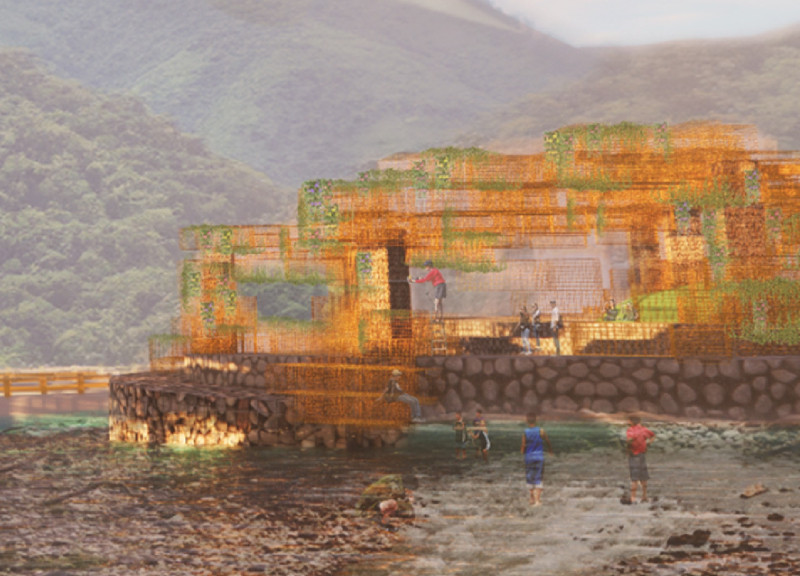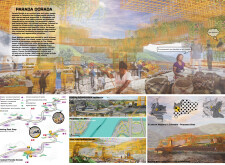5 key facts about this project
### Overview
Parada Dorada is an architectural and urban design initiative located in Colombia, aimed at enhancing social cohesion and stimulating local economies through the establishment of vibrant public spaces. This project seeks to address spatial and economic disparities by linking previously isolated areas, fostering cultural exchange among diverse communities.
### Spatial Configuration and Materiality
The spatial strategy employs interconnected platforms and open areas that promote pedestrian movement and social interaction among vendors, visitors, and local artisans. Artistic features, including murals and landscaping, contribute to an inviting environment. The design is characterized by the extensive use of steel gabions, crafted by local artisans and filled with indigenous river stones, which connect the project to its ecological context. The integration of local building materials highlights a commitment to sustainability, minimizing transportation-related carbon emissions while celebrating local craftsmanship through the inclusion of woven baskets and pottery as integral design elements.
### Community Engagement and Infrastructure Integration
Active participation of local residents is a fundamental aspect of the project, ensuring that the developed space reflects community needs and preferences. Plans for workshops and events will foster local ownership, while vendor areas will support regional agriculture and economic viability. The project strategically connects with existing infrastructure, including roads and bridges traversing the Andes, enhancing accessibility for both residents and tourists. Furthermore, the design's multicultural representation captures the sociocultural diversity of Colombia, incorporating elements from five distinct cultural regions and emphasizing inclusivity throughout the architectural narrative.



















































